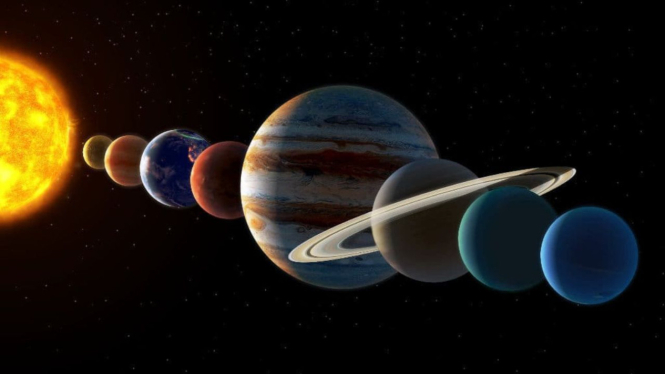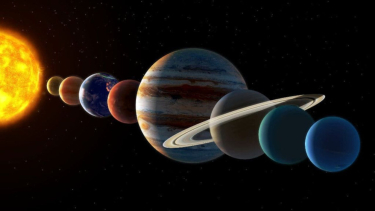A New Study Reveals Earth Probably Should Not Exist
- Vito Technology
VIVA – The orbits of the inner solar system planets - Mercury, Venus, Earth, and Mars - are chaotic, and models have suggested that these inner planets should have crashed into each other by now. And yet, that has not happened. If it happens, Earth probably should not exist.
New study published May 3 in the journal Physical Review X may finally explain why.
Through a deep plunge into the models for planetary motion, the researchers discovered that the motions of the inner planets are constrained by certain parameters that act as a tether that inhibits the system's chaos.
Besides providing a mathematical explanation for the apparent harmony in our solar system, the new study's insights may help scientists understand the trajectories of exoplanets surrounding other stars.
Planets constantly exert a mutual gravitational pull on each other – and these little tugs constantly make minor adjustments to the planets' orbits.
The outer planets, which are much larger, are more resistant to little tugs and so maintain comparatively stable orbits.
The problem of inner planet trajectories, however, is still too complicated to solve exactly. In the late 19th century, mathematician Henri Poincare proved that is is mathematically impossible to solve the equations governing the motion for three or more interacting objects, often known as the three body problem.
As a result, uncertainties in the details of the planets' starting positions and velocities balloon over time.
It is possible to take two scenarios in which the distances between Mercury, Venus, Mars, and Earth differ by the slightest amount, and in one the planets smash into each other and in another they veer apart.
In 1989, Jacques Laskar, astronomer and research director at the National Center for Scientific Research and the Paris Observatory and co-author of the new study, calculated the Lyapunov time characteristic for the orbits of inner solar system planets to be only 5 million years.
"This means that you basically lose one digit every 10 million years. So, for example, the initial uncertainty of the planet's position is 15 meters, 10 million years later this uncertainty becomes 150 meters. That gives an uncertainty of 150 million kilometers, equivalent to the distance between the Earth and the Sun. You basically don't know where the planet is," Laskar says.
While 100 million years may seem like a long time, the solar system itself is more than 4.5 billion years old and the absence of dramatic events - such as planetary collisions or planets being knocked out of all this chaotic motion has long puzzled scientists.





















